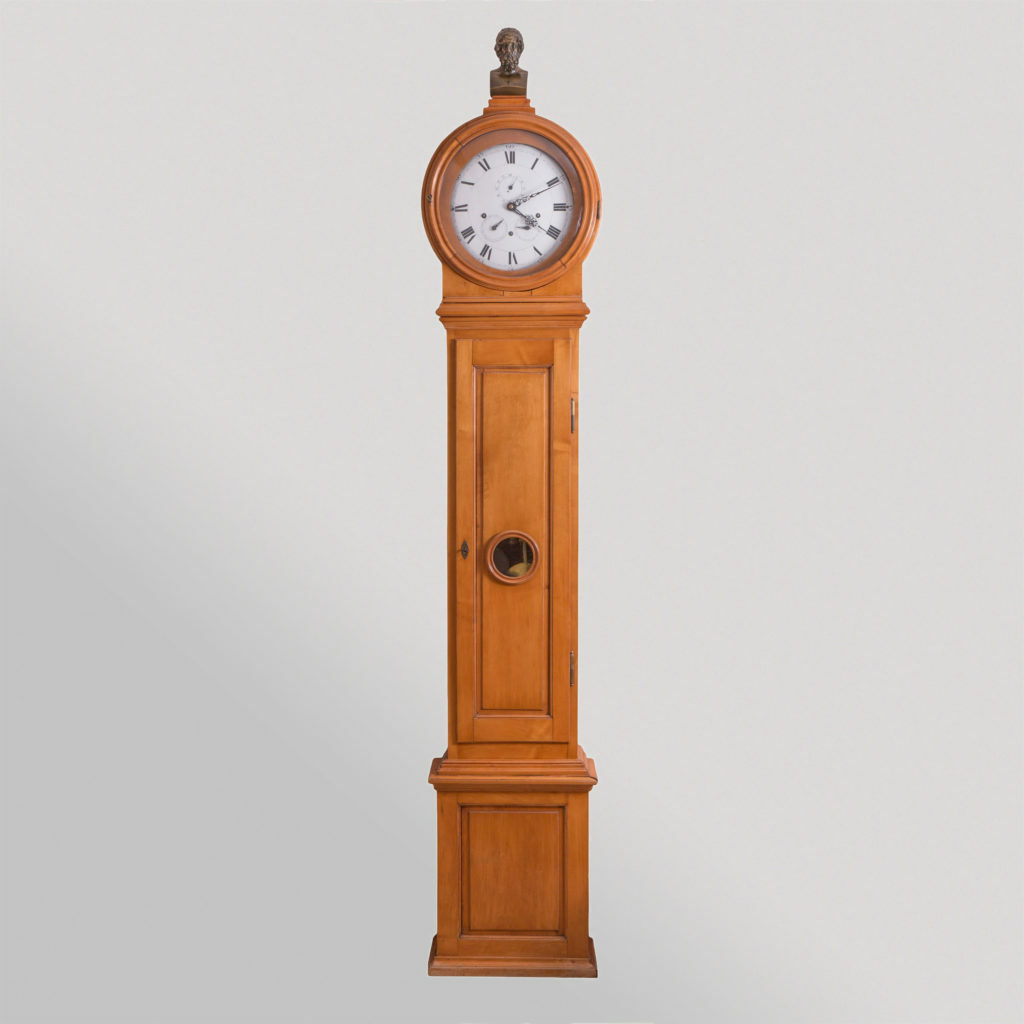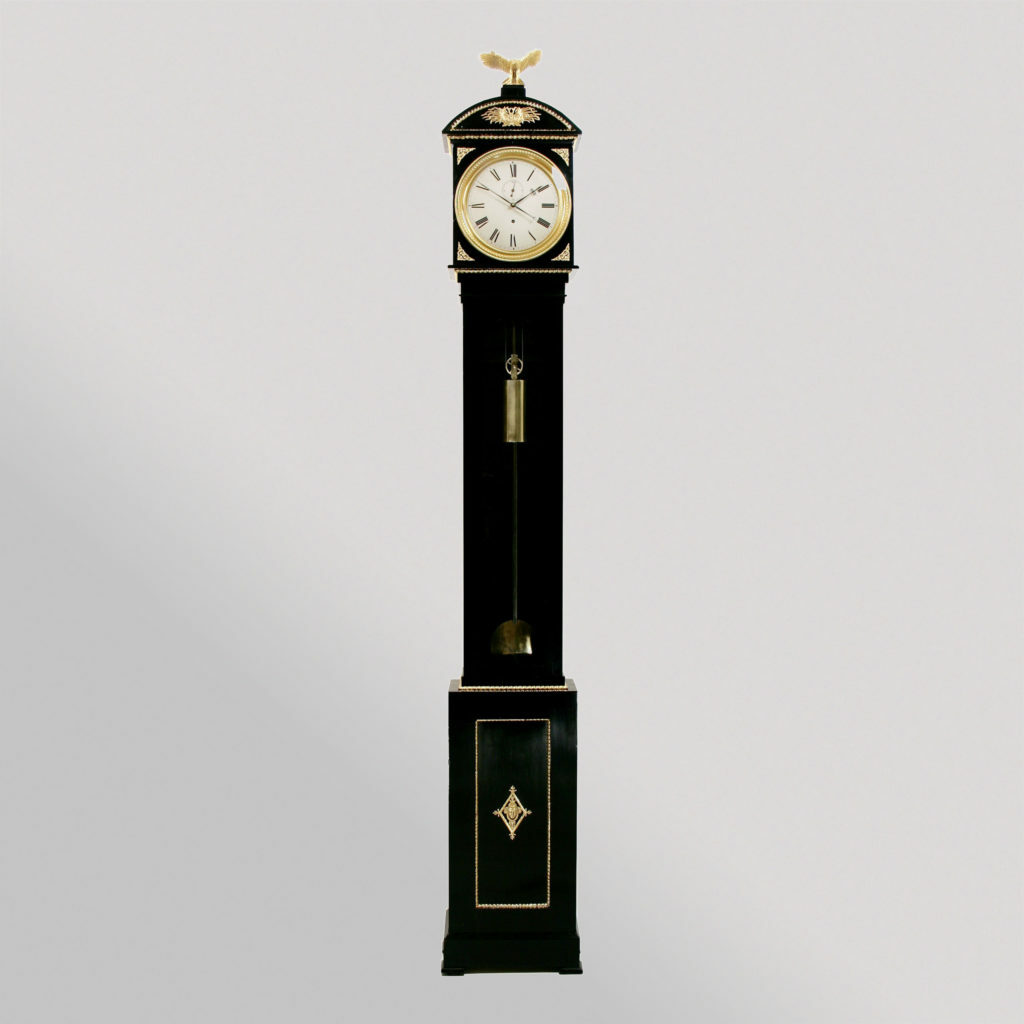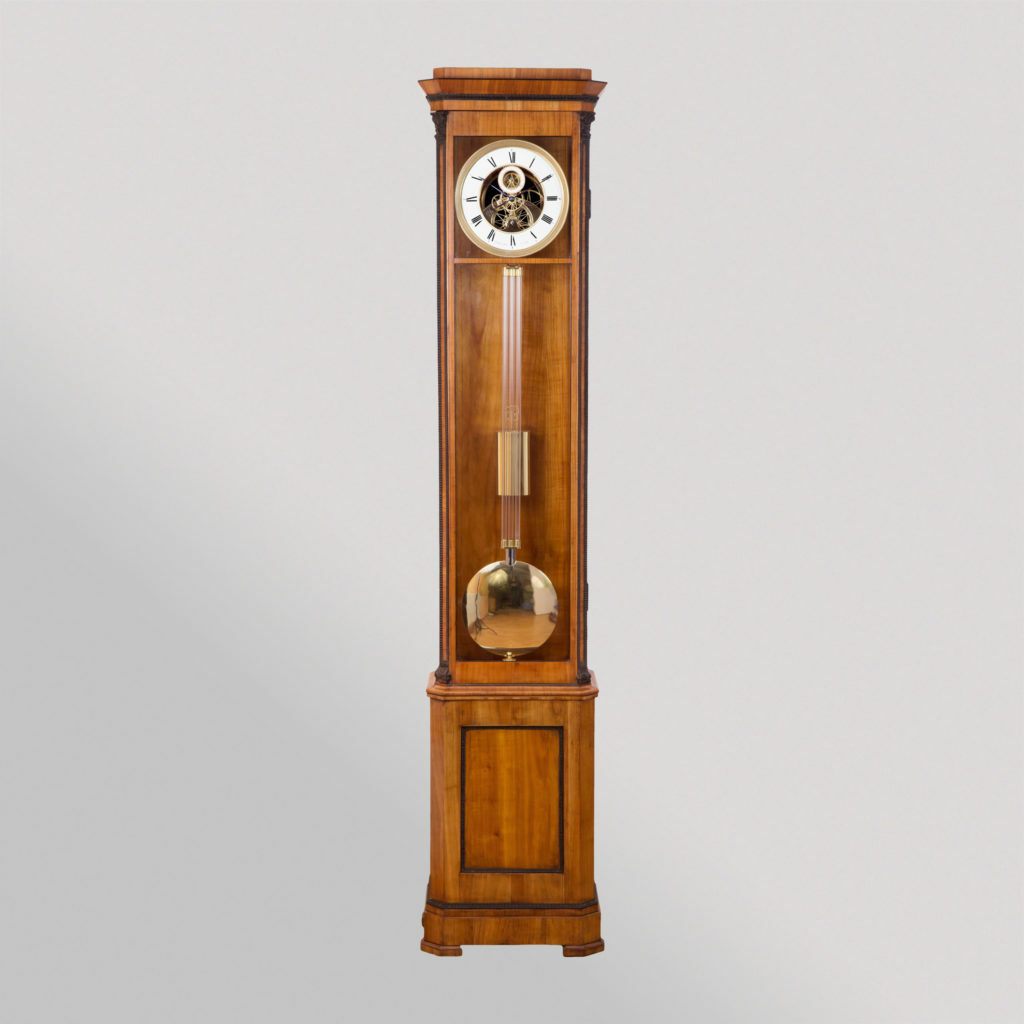Longcase Clocks
Between 1800 and 1850 there had been a significant change in style in the Viennese regulators called Bodenstanduhren. These grandfather clocks (also floor standing clocks, longcase clocks) inevitably differ from wall clocks although the technology is often the same or similar.
Background Knowledge
Between 1800 and 1850 there had been a significant change in style in the Viennese regulators called Bodenstanduhren. These grandfather clocks (also floor standing clocks, longcase clocks) inevitably differ from wall clocks although the technology is often the same or similar. The clock case is extended by a lower part standing on the floor. On the one hand it served the purpose to extend the drop height of the weight, by which a long duration could be achieved. Year duration floor standing clocks have therefore been preserved in notable museums and collections. Another version of the grandfather clock has a middle part which merges with the base of the clock, – without a larger box for the pendulum bob. The clock cases were sometimes decorated with various ornaments such as columns and gold bronze fittings.
Clock movements and pendulums were just as versatile and complex as were laterndlclocks and in technical respects in no way inferior to the laterndlclocks. The compensation pendulums, as made by Johann Sandhaas and Joseph Binder, were of exceptionally high quality. Examples can be found in the Sobek Collection, which is part of the Museum of Applied Arts in Vienna. Johann Sandhaas, who immigrated from Baden Württemberg to Vienna and lived in Vienna for only a short period of time, and his partner Josef von Sonnenthal were granted a patent for a compensation pendulum and a new escapement in 1822. Today only two floor standing clocks from this master are known to be in private collections. The clockmaker Jakob Degen, who emigrated from Switzerland, left us two grandfather clocks with rich gold bronze fittings of the period around 1795, both of which are in Viennese museums today, but once were in imperial residences. Matthäus Ratzenhofer made astronomical clocks with glass encapsulated clock movements, which show his exceptional workmanship. His cabinet maker used predominantly walnut for the clock cases.
In the 1830s, Viennese clockmakers such as Alois Löffler specialized in the production of floor standing clocks and he put his patented clock movement, with 3 days or weekly duration and Huygen’s endless winding, in very flat, small clock cases without protruding top and base. They were mostly made of mahogany wood. We have not seen wall clocks by either one of these masters. Finally, it should be mentioned that very few Viennese clockmakers specialized in one type of clock and many manufactured and distributed a multitude of different clocks such as wall clocks, floor standing clocks, bracket clocks, carriage clocks and pocket watches in their workshops.
Are you looking for a Longcase Clock?
Feel free to browse through our Website!


